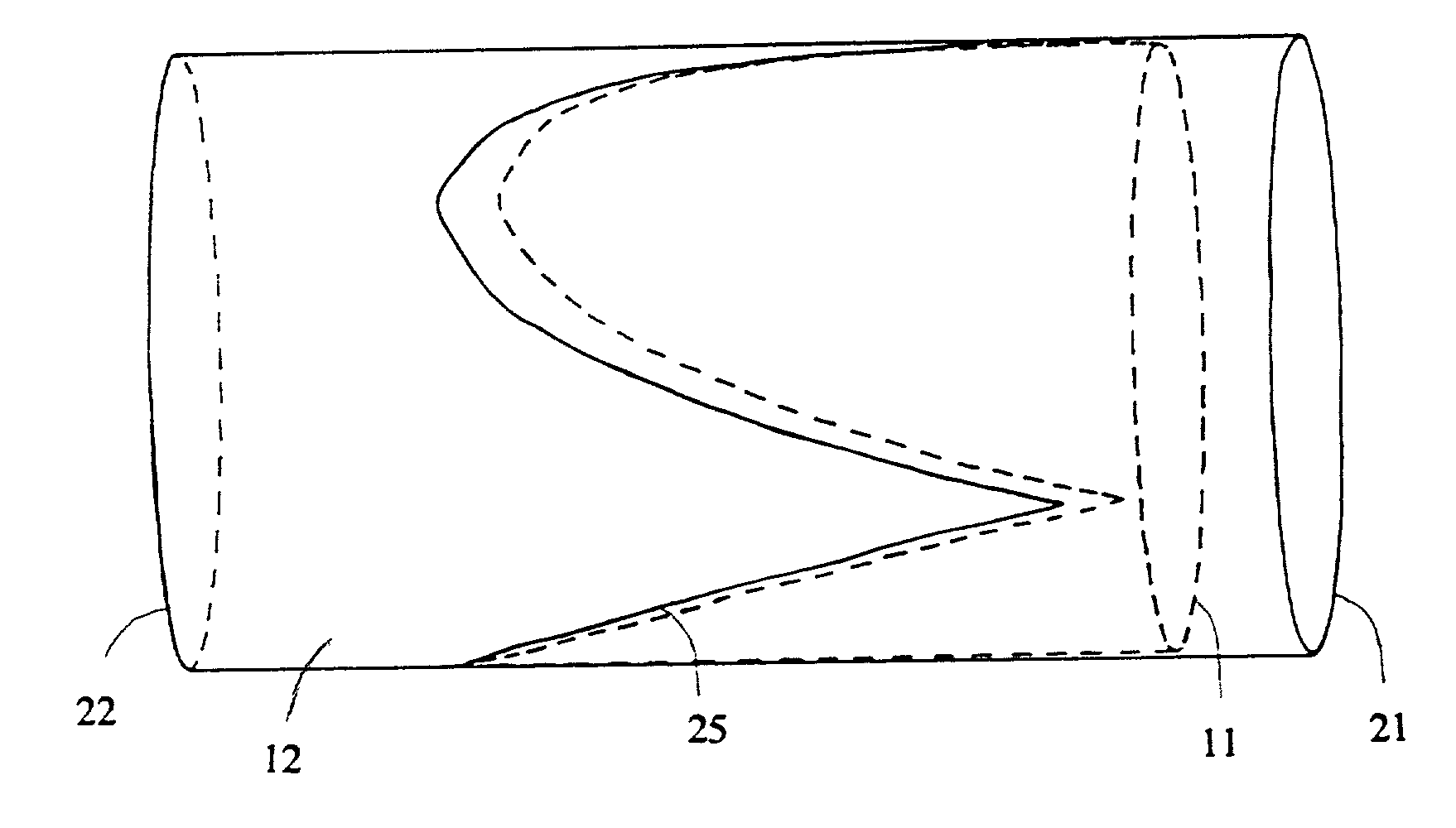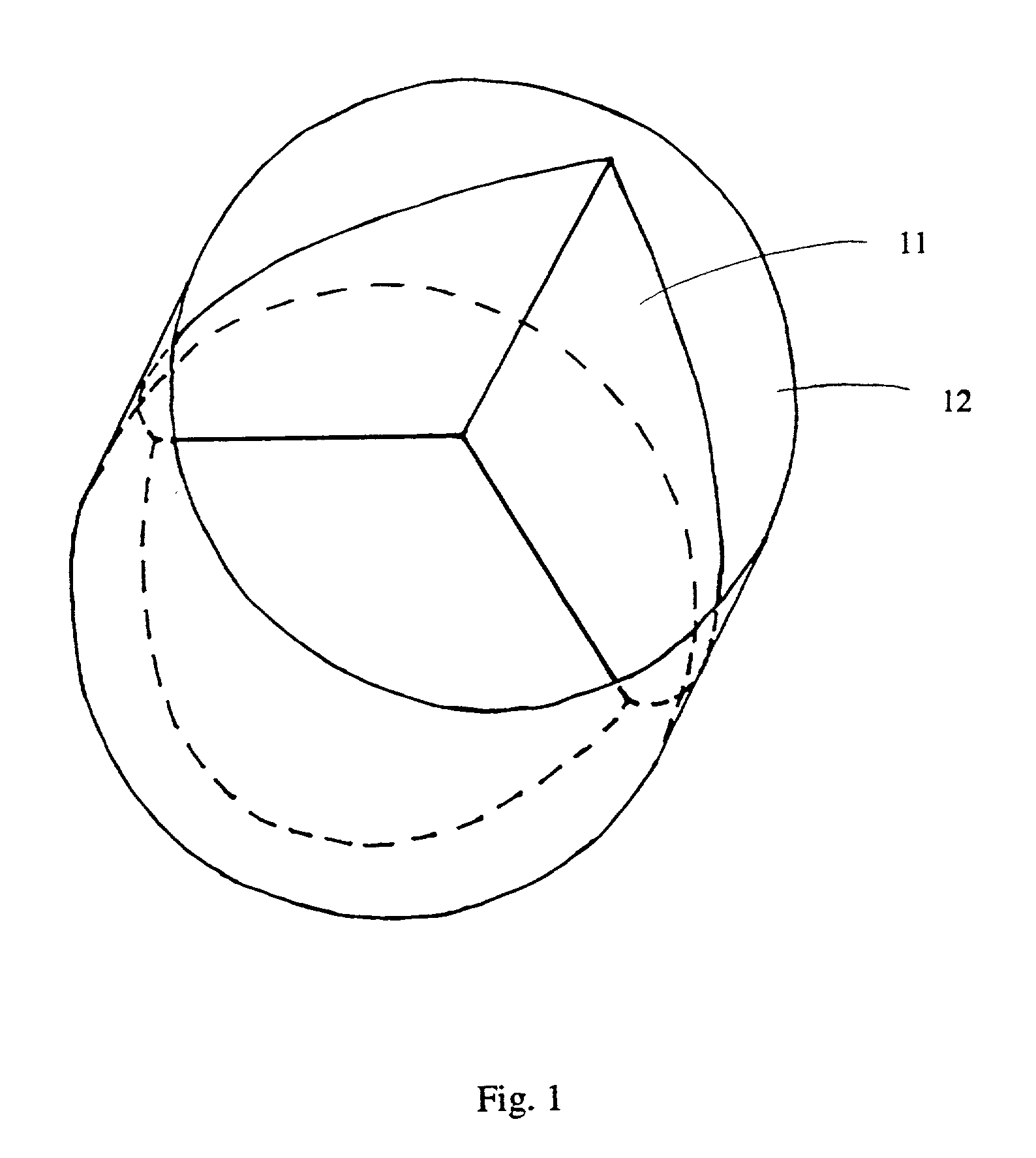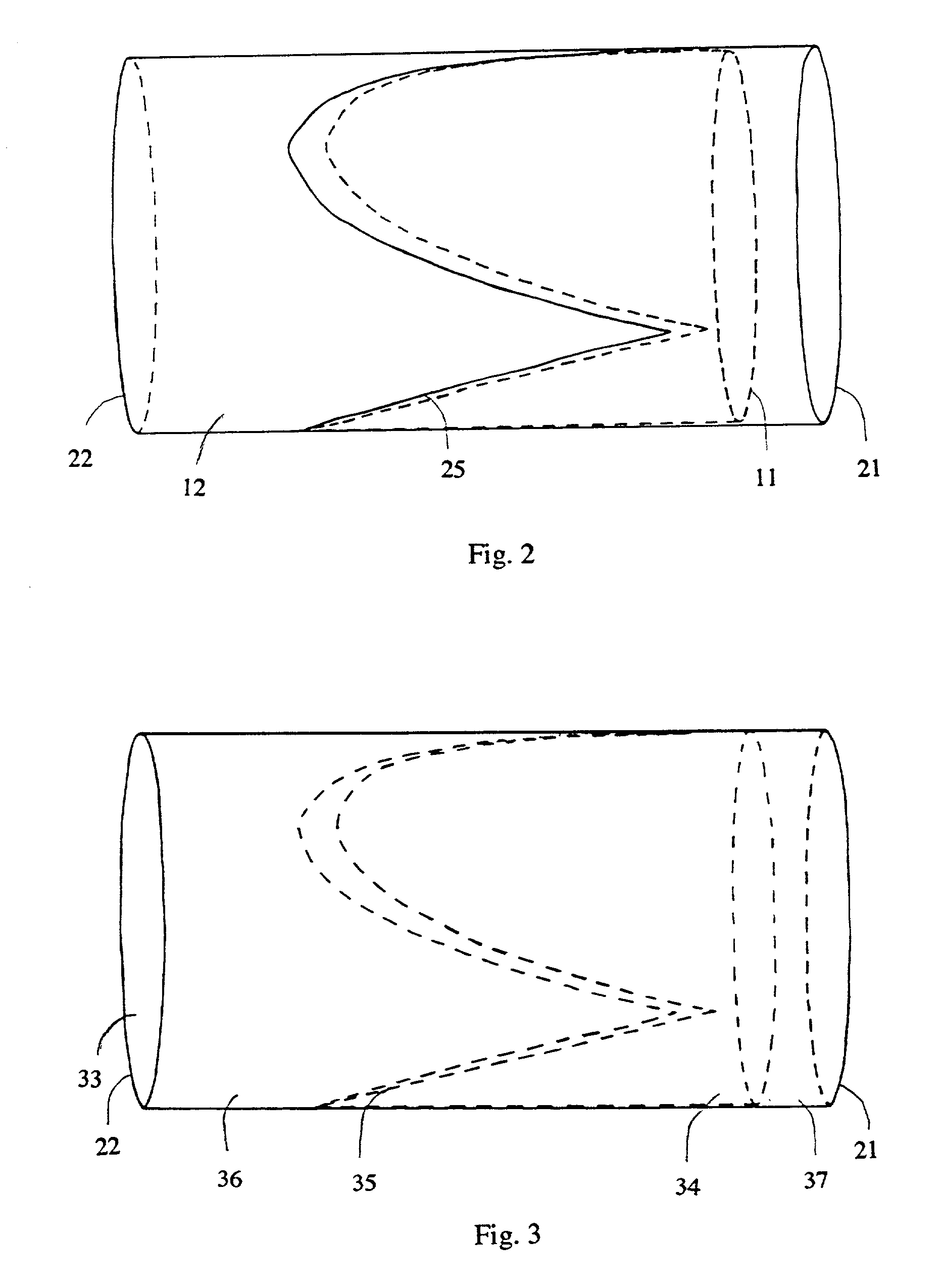Venous valve and graft combination
a venous valve and graft technology, applied in the field of venous valve and graft combination, can solve the problems of blood pooling in the body extremities, complicated surgical techniques for valve replacement, and limitations of existing pharmaceutical and surgical treatments for such venous disorders
- Summary
- Abstract
- Description
- Claims
- Application Information
AI Technical Summary
Problems solved by technology
Method used
Image
Examples
Embodiment Construction
[0025] A preferred embodiment of the valve and graft combination of the present invention is illustrated by FIGS. 1 and 2. The closed valve and graft combination shown in FIG. 1 demonstrates that the valve dimensions are related to the graft diameter. The streamlined profile when valve 11 is fully open (shown in FIG. 2) is a particularly desirable design feature. When the valve is fully open, the diameter for blood flow is essentially the graft 12 diameter minus two thicknesses of the valve material. The diameter of the graft is adjusted accordingly for the patient's vein (typically less than 10 mm). As the graft is held firmly against the inner vein wall by the venous blood pressure, the diameter available for blood flow becomes the original vein lumen minus four thicknesses of material. The lengths of the graft from the warp insertion line 25 (shown in FIG. 2) to the proximal end 21 and to the distal end 22 can also be adjusted to the patient's requirements. A taper can further be...
PUM
 Login to View More
Login to View More Abstract
Description
Claims
Application Information
 Login to View More
Login to View More - R&D
- Intellectual Property
- Life Sciences
- Materials
- Tech Scout
- Unparalleled Data Quality
- Higher Quality Content
- 60% Fewer Hallucinations
Browse by: Latest US Patents, China's latest patents, Technical Efficacy Thesaurus, Application Domain, Technology Topic, Popular Technical Reports.
© 2025 PatSnap. All rights reserved.Legal|Privacy policy|Modern Slavery Act Transparency Statement|Sitemap|About US| Contact US: help@patsnap.com



